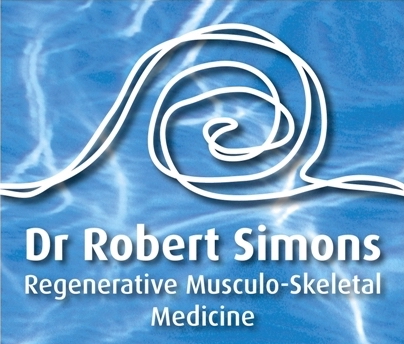Platelet Rich Plasma (PRP) for Mulsculoskeletal Injury and Regeneration
PRP is a concentrate of platelets derived from the patient’s own blood. PRP is used therapeutically to accelerate tissue healing. Platelets contain granules that release more than 300 growth factors and cell messenger molecules.
In the body platelets are the cells that arrive first to the site of an injury as soon as capillaries have been broken. They are the component of blood that initiates clotting around the site of injury. As they concentrate in the area they influence healing of the tissue by the release if a vast array of Growth Factors and cell messenger molecules (Cytokines).
When PRP is accurately delivered to the site of tissue damage by ultrasound-guided injection, healing can be switched on in chronic degenerative conditions. In acute injury PRP injection accelerates healing.
Here is a situation everyone can relate to:
You have a minor cut to the skin it takes a few minutes to stop bleeding. A clot develops. The area gets sore and swollen for a few days, then the edges of the wound seal together, followed by scar formation, and then over time the scar gets smaller and the tissue loses its red colouration. Finally we forget about it because the skin is soft, supple and strong, and back to normal again.
That is the body responding to local injury. The clot that’s developing is trapping billions of platelets and it’s the platelets that are responsible for the clot closing. It is also the platelets releasing their Growth Factors and Cytokines that switch on the tissue repair that follows spontaneous healing which is something we expect, and take for granted.
Who Could Benefit from PRP?
Anyone who has a tissue injury of any sort could benefit from PRP.
In this practice, it is used for stimulating repair of athletic injury and degenerative diseases of the musculoskeletal system.
This Includes:
- Osteoarthritis of any joint from knee to TMJ
- Facet joints of the spine.
- Cartilage damage and degeneration
- Tendon injury of the following areas/such as:
- Achilles tendon
- Tennis elbow & Golfers elbow
- Rotator cuff injury; and
- Hamstring tendon
- Muscle tears anywhere.
PRP can also be used for epidural injection (instead of steroid injection) in the event of disc damage in the spine, with or without sciatica. In BACK PAIN, PRP can be used in preference to hyaluronic acid and cortisone injections in our practice as it is usually better indicated for its healing effects.
Cortisone has collagen damaging effects which is already a problem in chronic injuries and tendon and arthritis, so is nor usually recommended, see the comparison studies between hyaluronic acid and PRP on the website.
PRP is the go-to first line therapy of professional athletes in Europe and the USA.
How it Works
In Essence:
- Tissue injury causes the damaged cells to release cell messengers;
- These messengers attract platelets to the injury like iron filings are drawn to a magnet;
- Once they arrive on site, the platelets release their growth factors and cytokines which in turn switch on the anti-inflammatory and repair mechanisms that assist in healing the tissue;
- Platelets release their vast array of signalling molecules called GROWTH FACTORS and CYTOKINES;
- The GROWTH FACTORS and CYTOKINES attach to receptors on the cells of surrounding tissues and blood vessel cells;
- This signals the DNA of those cells; and
- Causes release of molecules which reduce inflammation and increase tissue building in the joint, ligament or tendon.
How PRP is Obtained?
When we use PRP for accelerating the healing process, we concentrate the population of platelets from peripheral blood by 6-10 times.
In order to do this, we take blood from the arm of the patient and use a sophisticated device that is designed specifically to separate out various cell types from the blood. After separation and concentration of 100 ml of whole blood, there will be a yield of about 10 ml of PRP.
Research on PRP – Research PDF
PRP has been demonstrated to be clinically effective in healing tendon, ligament, bone, muscle and cartilage injury and degeneration.
Significantly, it has been demonstrated that it lowers the incidence of infection when used during surgery.
As PRP is a product from the patients’ own blood which has not been chemically altered, there is no risk of allergy or immune reaction. In In the literature, side effects or complications of PRP injection are rare. The main risks include local infection (<1% chance) and pain or irritation at the site of injection.
Tangible Effects of PRP
Collagen is require to form the structure of all tissues, and blood vessels are required to nourish the area as it returns to normal function.
The multitude of GROWTH FACTORS and CYTOKINES released by platelets have time sequence effects whereby they keep the healing process in motion over weeks.
It makes sense that by therapeutically increasing the platelets concentration in the area of injury (by injecting them), the healing process is powered up.
